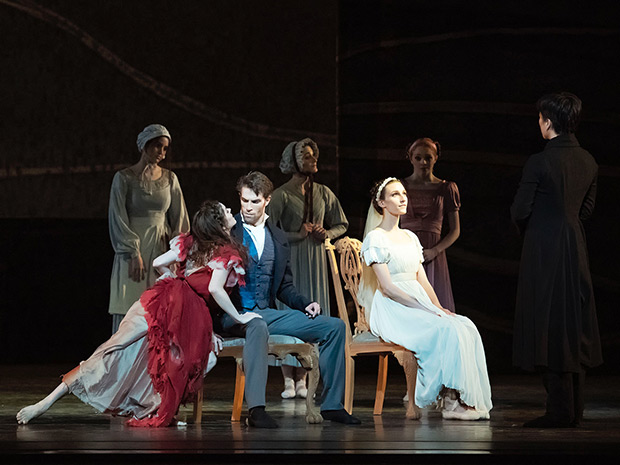
© Gene Schiavone. (Click image for larger version)
American Ballet Theatre
Jane Eyre
★★✰✰✰
New York, Metropolitan Opera House
4 June 2019
www.abt.org
www.metopera.org
Jane’s Conundrum
There is a huge imbalance in the number of new works created by men and women for the ballet stage. Evening-length narrative ballets by women are even more of a rarity. So the American première of Cathy Marston’s Jane Eyre on June 4 was a big event. According to the newly-formed Dance Data Project, which tracks the leadership roles of women in the field, Marston’s ballet is one of only nine such premieres at the top 50 companies this season. That is out of several dozen.) The Metropolitan Opera House was full of dance luminaries who had traveled from other cities – Julie Kent from Washington, Jorma Elo from Boston – to be there.
Cathy Martson is a British choreographer with a lengthy portfolio and a specialty in telling stories, particularly stories drawn from the literary canon. In her twenty years as a choreographer, she has made ballets based on Ibsen, Shakespeare, and D. H. Lawrence. Her Jane Eyre, based on Charlotte Bronte’s classic Gothic novel about a woman searching for her place in the world, débuted at the Northern Ballet in 2016, to relative acclaim, and she recently created a one-act ballet based on Edith Wharton’s Ethan Frome, for San Francisco Ballet.

© Gene Schiavone. (Click image for larger version)
But for all Marston’s qualifications, I found her Jane Eyre to be a dreary affair, theatrically dutiful and choreographically thin. The production, designed by Patrick Kinmonth, is handsome and spare, with large panels of cloth defining the space and a platform upstage used to create separate tableaux. But a drab palette – even Jane Eyre’s wedding dress is in a shade of putty – eventually tires the eye. The quotations of Mendelssohn (Felix and Fanny) and Schubert, woven into a larger musical tapestry by the composer Philip Feeney, form an endlessly looping sea of sound, without pauses for breath. The music becomes a backdrop, a mood enhancer rather than a set of contrasting musical scenes.
Marston does tell the story, in almost too much detail. She begins at the beginning. There is Jane’s miserable orphanhood: the funeral of her parents, her mistreatment at the hands of an aunt and her hateful cousins; her eventual education at a school for orphan girls. (The young Jane is danced with great fierceness by Catherine Hurlin.) For long stretches of the first act, the production is like a play without words, in which Jane Eyre fights off various foes. Her predicament is further represented by a pack of men in gray tailcoats, described in the program as her “inner demons.” Repeatedly, they mandhandle, fling, lift, and push her down, an obvious metaphor for the hard knocks she must endure in a paternalistic society.
But more than the literalness of the storytelling, what is disappointing is the pedestrian quality of the movement ideas. In scene after scene, most of the action happens through stylized gesture, repetitive and relentless. Teaching and learning is shown by pointing into the air, as if writing on a blackboard. An arm in front of the torso is the signifier of Jane’s self-abnegation. Edward Rochester – the dashing employer with whom she falls in love – expresses himself through a stiffly outstretched leg, foot rigorously pointed. (It was unclear to me what this gesture was supposed to mean.) Upright Mr. St. John (Aran Bell), a curate who offers Jane a life of devotion and respectability, repeatedly frames her torso with his arms, as if imprisoning her in church walls. Beyond that, the dancing lacks defining features; it’s bland and spare.

© Gene Schiavone. (Click image for larger version)
The entire cast does its level best with the thin material: Devon Teuscher, as the adult Jane, is touchingly sincere and convincingly tormented; Zimmi Coker, Rochester’s young ward, is lively to the point of hyperactivity. Stella Abrera makes an appearance as an imperious and catty Blanche Ingram, Jane’s rival for Rochester’s affections. She has a bad habit of pushing people down if they get in her way. If anything, James Whiteside hams it up a bit too much in the role of Rochester, an unlikeably arrogant figure whose appeal is difficult to fathom.
Ironically, the one spot of color, both dramatic and visual, is given to Bertha Mason, Rochester’s mad wife, whom he keeps hidden somewhere in the back of the house, looked after by a surly maid. (Victorian mental health practices at their finest!) She wears a tattered red dress as she slinks and creeps around the corners, finally bursting forth during the abruptly curtailed wedding of Jane and Rochester. Danced by Cassandra Trenary, she is all seething eroticism and manic energy, legs and arms flailing and eyes gleaming as she wraps herself around Rochester like a vine. In their second encounter, during the dramatic fire that will end her life and leave him blind, she is even more dynamic and wild.
Once again, the madwoman steals the show. The ever sane, forgiving Jane is left to pick up the pieces, cradling Rochester in her arms, asking him to marry her. (An arm revolving around the other arm signifies marriage.) This could be read as a feminist moment – the moment in which Jane takes full control of her life – or as the ultimate self-abnegation. However one chooses to interpret it, what is missing in this Jane Eyre isn’t an understanding of the text, but rather a visual language that makes a case for translating it from words into movement.










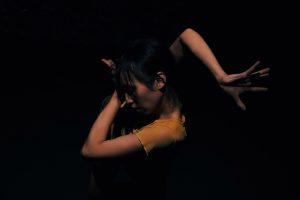
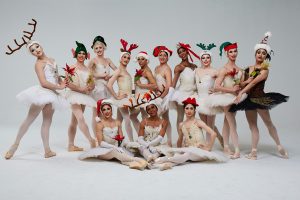
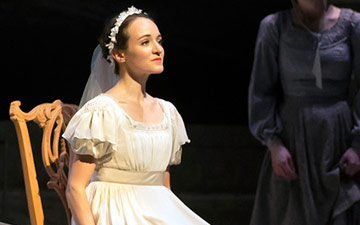
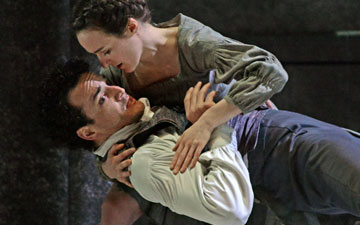
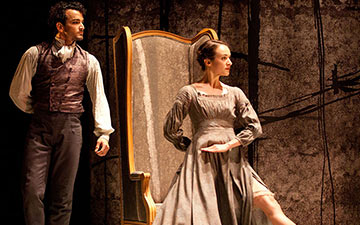
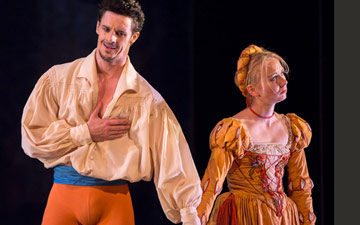
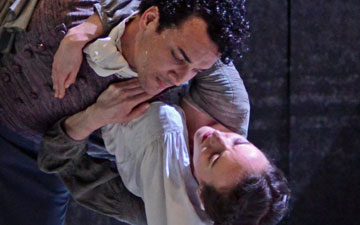
You must be logged in to post a comment.